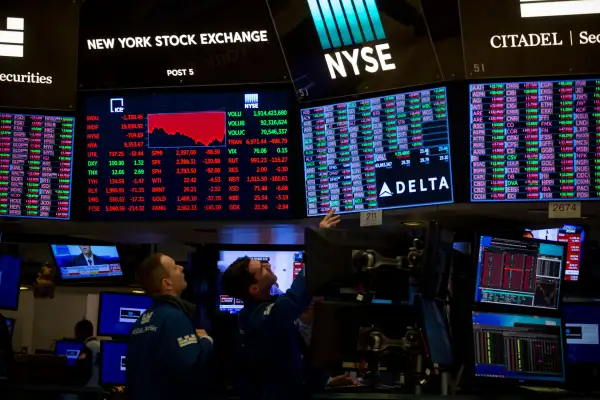Why New Investors Shouldn't Panic Over Monday's 700-Point Stock Market Drop
Money is not a client of any investment adviser featured on this page. The information provided on this page is for educational purposes only and is not intended as investment advice. Money does not offer advisory services.

Stocks fell sharply on Monday, as markets grew grew anxious about rising COVID-19 cases and spreading of the Delta coronavirus variant. With so many new investors piling into the stock market, the move is sure to be the biggest drop many have endured so far.
The Dow closed down more than 700 points, or 2.1%, suffering its worst day since last October. The S&P 500 also fell around 1.6%.
Apps like Robinhood and Webull have brought new investors to the market in droves since the start of the pandemic, taking to trading at lightning speeds for no fees. And the market has been overall pretty friendly to them — until now. If you don't have years of investing under your belt, big downward market moves can be nerve-wracking.
Here's the well-known rule that proves true time and time again: The stock market is anything but predictable, but sticking to your long-term plan will almost always win over attempts to time the market.
Here are 3 facts for new investors to keep in mind as they weather this most recent volatility.
The Dow frequently has down days
The Dow — an index that tracks 30 large, publicly-traded companies — is often used as a benchmark for how stocks are doing overall. And down days for this index are relatively frequent... and no reason to panic.
A recent Forbes study that looked at nearly nine decades of stock market returns found that between 1928 and 2016, about 8% of trading days resulted in a negative return of between 1% and 2% and nearly 2% of trading days resulted in a negative return of between 2% and 3%.
While seeing the stocks in your trading app dip into the red might feel like a cause for alarm, it's something to get used to.
Your portfolio is up (a lot) compared to a year ago
If you think this is a big drop, speak to an investor who had money in the stock market in March of 2020. When the pandemic hit the U.S., the market plunged over and over again, dropping as much as 3,000 points in one day.
But since then, the market has more than made up for those losses. On March 23, 2020, the Dow was at around 18,600 points and now, it's near 34,000. That's an over-80% rebound.
"Stocks go up a lot more than they go down," Michael Cocco, financial advisor with Equitable Advisors, has previously told Money. “It’s just that people remember the down a lot more.”
Diversification and rebalancing is key
Sticking to a long-term plan is vital, but it's just as important that you regularly revisit that plan and rebalance your portfolio to make sure it still matches your goals and tolerance for risk.
Monday's decline is a good reminder that riskier assets, like stocks and cryptocurrency, can all fall at the same time — and that's bad news for your portfolio. (Bitcoin's price has also dropped in recent days.) That's why it's important to balance out these kind of assets with other, less risky assets that can hold their ground. The iShares iBoxx $ Investment Grade Corporate Bond ETF, for example, is up nearly 1% as the Dow falls.
Even just looking at your stocks alone, a healthy combination of small and large, domestic and international stocks will ensure that next time the market drops, you don't feel quite so queasy.
More from Money:
Here's How Many Stocks You Should Have in Your Portfolio
